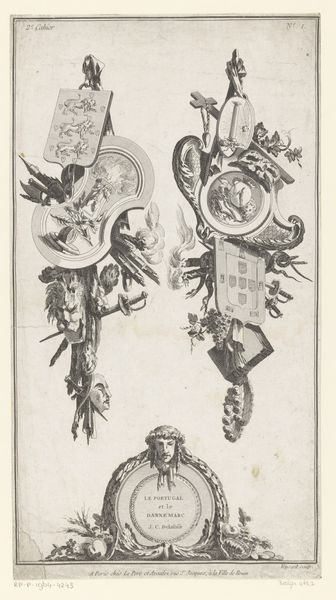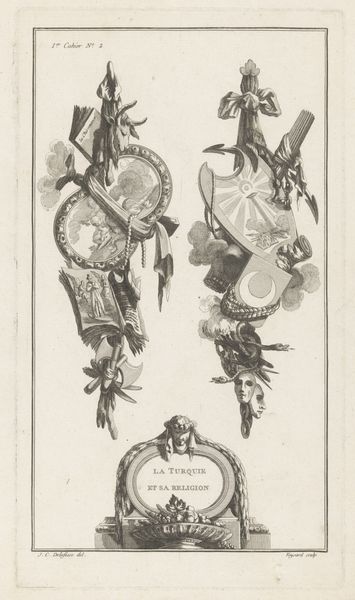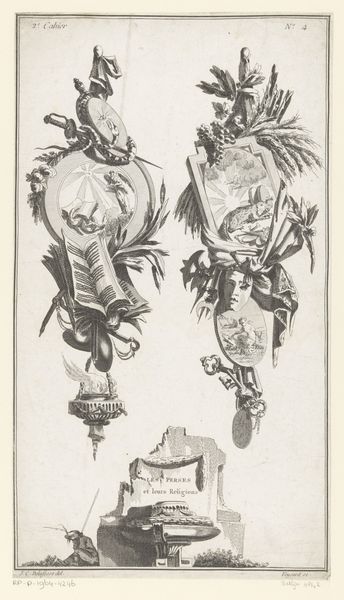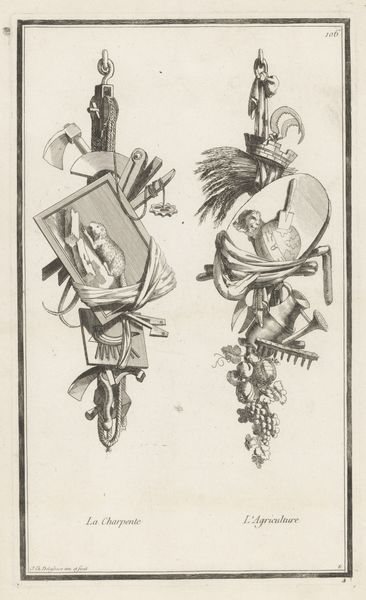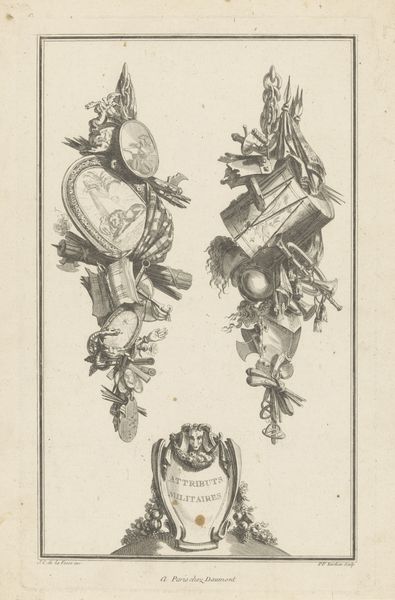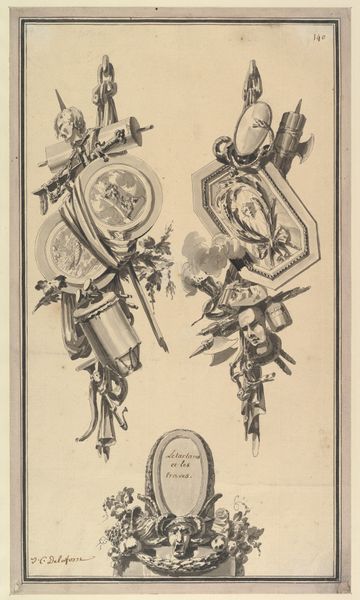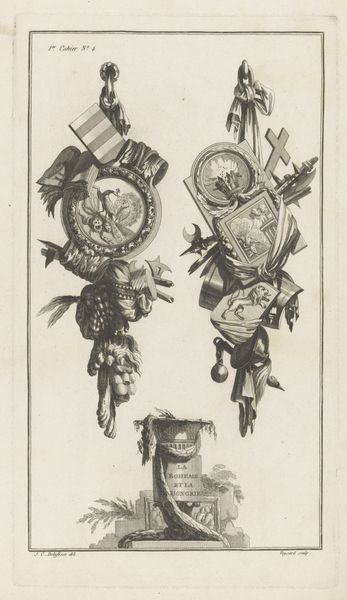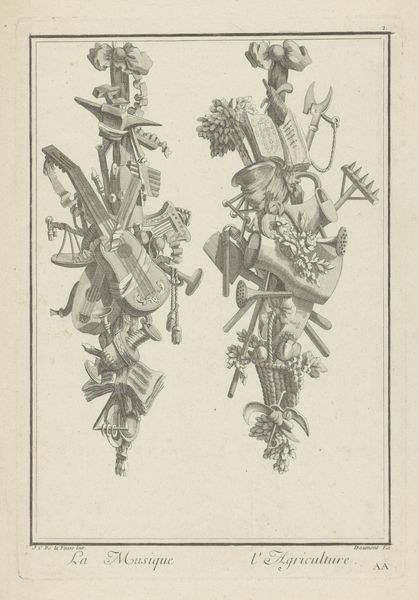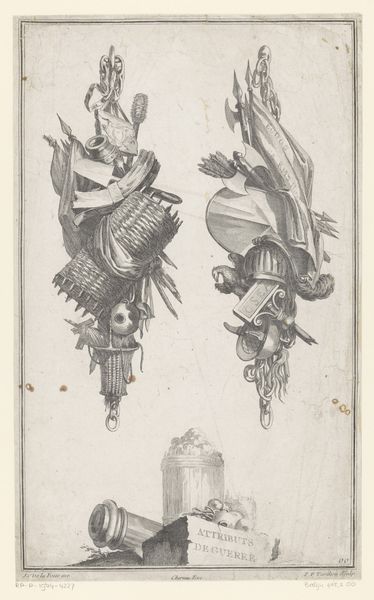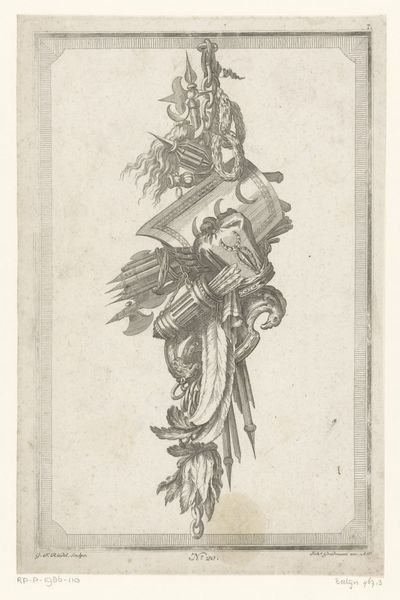
Dimensions: height 351 mm, width 198 mm
Copyright: Rijks Museum: Open Domain
Curator: Oh, this is "Japan" by Etienne Claude Voysard, created between 1772 and 1779. It’s a Baroque engraving currently housed here at the Rijksmuseum. I’ve always found it rather…intricate. Editor: Intricate is one word for it. I find it slightly unsettling. It's all these disparate symbols crammed together, a bit overwhelming, almost…oppressive. The high contrast doesn’t help! Curator: It's meant to be an ornament, a print! Voysard was playing with visual density, packing allegorical meaning into a decorative form. Look at how he layers symbols associated with Japan and its religion atop classical motifs, like the urn at the bottom. He’s building a bridge, as flawed as it might be, between cultures. Editor: I see the "bridge," but it feels more like a cultural imposition. Placing Japanese culture within these rigid European frameworks—the shields, the classical figures. It speaks volumes about how the West perceived, or rather, *mis*perceived the East during that era. Look at the phrase “Le Japon et sa Religion” enshrined at the base, positioning Japanese religion, framing it within a very western context. It's appropriation disguised as appreciation. Curator: But perhaps that very misinterpretation is the point! It reflects a specific historical moment, a European fantasy of Japan, filtered through their own artistic vocabulary. He wasn’t trying to *accurately* represent Japanese culture. The work is *about* the European gaze. And there’s an undeniable baroque playfulness to it all, a willingness to embrace the fantastic and the theatrical. Editor: And who does that playfulness serve, exactly? To me, it amplifies the objectification, reinforcing stereotypes under the guise of artistic expression. I question that perspective—whether the fantasy really transcends cultural representation and who gets to enjoy that fantasy. The fact it is designed as a print implies mass consumption that spreads those messages more easily than fine art. Curator: I agree it's not unproblematic! And maybe there’s a naivete there as well. He wasn’t immune to the biases of his time. But within its historical context, it provides an interesting look at the relationship between Europe and Japan at the end of the 18th century. Editor: A relationship of power, more like it. "Japan" isn’t just a decorative engraving, it's a testament to cultural appropriation, a visual embodiment of unequal exchange and fantasy. Curator: Exactly, that tension makes it such an enduring object of discussion. Editor: Absolutely. It certainly leaves you with a lot to think about.
Comments
No comments
Be the first to comment and join the conversation on the ultimate creative platform.
